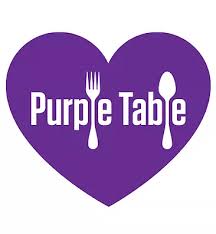The Family Caregiving Tsunami is Here. How are We Supporting Them?

 We have a family caregiving tsunami whose tidal waves are affecting every corner of our society. I venture to say that most communities are not prepared for the domino effects of a fast-aging population let along to provide support to their families that are scrambling to stay above water - emotionally, physically and financially.
We have a family caregiving tsunami whose tidal waves are affecting every corner of our society. I venture to say that most communities are not prepared for the domino effects of a fast-aging population let along to provide support to their families that are scrambling to stay above water - emotionally, physically and financially.
November is National Family Caregivers Month. Spearheaded by the Caregiver Action Network, the theme is Caregiving Around the Clock.
As I travel abroad, I certainly see first hand that the challenges in the US are felt around the globe as this age-wave takes hold. Public institutions are already stretched to serve current needs and despite the growth of
Let's look at a few staggering US statistics compiled by the Family Caregiver Alliance:
- Approximately 43.5 million caregivers have provided unpaid care to an adult or child in the last 12 months. [National Alliance for Caregiving and AARP. (2015). Caregiving in the U.S.]
- About 34.2 million Americans have provided unpaid care to an adult age 50 or older in the last 12 months. [National Alliance for Caregiving and AARP. (2015). Caregiving in the U.S.]
- The majority of caregivers (82%) care for one other adult, while 15% care for 2 adults, and 3% for 3 or more adults. [National Alliance for Caregiving and AARP. (2015). Caregiving in the U.S.]
- Approximately 39.8 million caregivers provide care to adults (aged 18+) with a disability or illness or 16.6% of Americans. [Coughlin, J. (2010). Estimating the Impact of Caregiving and Employment on Well-Being: Outcomes & Insights in Health Management.]
- About 15.7 million adult family caregivers care for someone who has Alzheimer's disease or other dementia. [Alzheimer's Association. (2015). 2015 Alzheimer's Disease Facts and Figures.]
What is the Economic Impact?
- The value of services provided by informal caregivers has steadily increased over the last decade, with an estimated economic value of $470 billion in 2013, up from $450 billion in 2009 and $375 billion in 2007. [AARP Public Policy Institute. (2015). Valuing the Invaluable: 2015 Update.]
- At $470 billion in 2013, the value of unpaid caregiving exceeded the value of paid home care and total Medicaid spending in the same year and nearly matched the value of the sales of the world’s largest company, Wal-Mart ($477 billion). [AARP Public Policy Institute. (2015). Valuing the Invaluable: 2015 Update.]
- The economic value of the care provided by unpaid caregivers of those with Alzheimer's disease or other dementias was $217.7 billion in 2014. [Alzheimer's Association. (2015). 2015 Alzheimer's Disease Facts and Figures.]
The clock never stops for family caregivers, and globally the clock is ticking for public and private institutions, community organizations, faith communities and each one of us in this space to make a committment- that in 2019 we do more to reach family caregivers, provide support services and needed resources. They are and will remain the largest group support our aging population in the years ahead.
Pam Brandon is President/Founder of AGE-u-cate® Training Institute and a passionate advocate for older adults and those who serve them.


